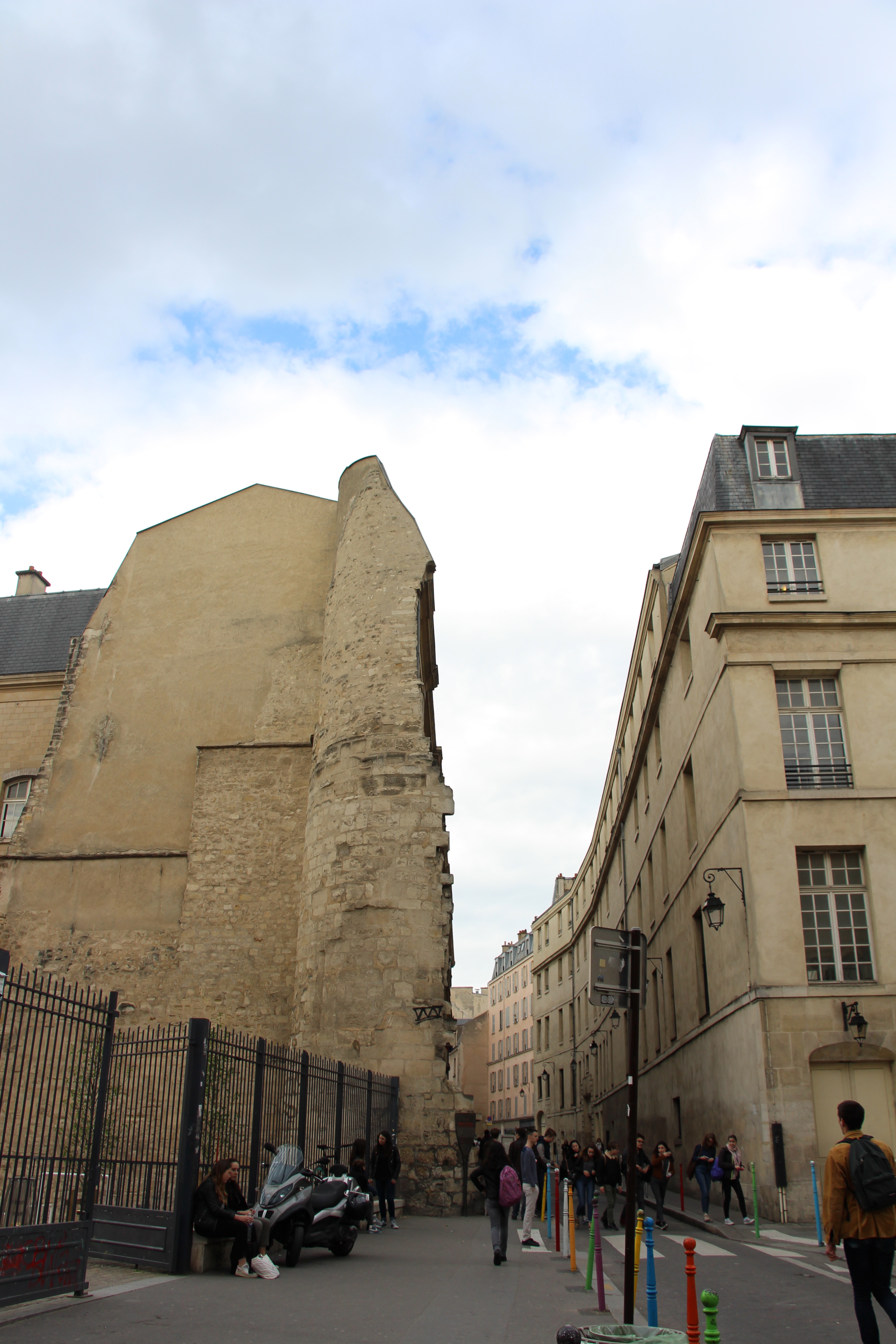1. Despite the fact that Paris has been inhabited since before the Ancient Romans – and was a fully developed city under both the Romans and the medieval French – most of what you see when you visit Paris today was actually built in the 19th century. That’s because when Napoleon III came to power, he completely demolished and rebuilt the city, ostensibly to improve waterways for Parisians (a major plus when the principal reservoir and sewer of the poor is the same Seine River), but in reality to keep the French from being able to stage revolts.
As a result of both this and previous expansion of the city, most of the medieval city walls built by King Philippe-Auguste (ostensibly to protect Paris from English invasion, but in reality to raise taxes) has been destroyed. There are, however, a few vestiges left, all of which can be found relatively centrally, because while Paris is now made up of 20 arrondissements, the original city was comprised only of the central five.
This one is probably the largest. It can be found behind Saint-Paul metro station, up against the courtyard of a local high school.
2. This is yet another rather large piece, just around the corner from the first. I love the way you can see the juxtaposition between the medieval wall and the 19th century Haussmanien-style apartment building.
3. A bit closer to the center is this tower, on rue du Louvre. It was discovered while digging a ventilation shaft for the line 14 metro and once marked the northern limit of the wall and the city – which is incredible to me, seeing how close it is to the river!
4. Evidence of the wall is a bit harder to find on the left bank, but there’s one particularly well-preserved section just behind the Pantheon (and not at all far from L’Enclos de Ninon).
5. But perhaps my favorite bit is in the basement of the Louvre. Before being transformed into a royal palace by Charles V, the Louvre was the fortress of this medieval fortification, and when President Mittérand signed off on the Louvre’s expansion (and the construction of the pyramid), the original moat and base of the fortress were uncovered under the modern museum. These days, visitors to the Louvre can walk in the moat and even see this base of the drawbridge that would have kept out foreign invaders. (Of course, none ever showed up.)




